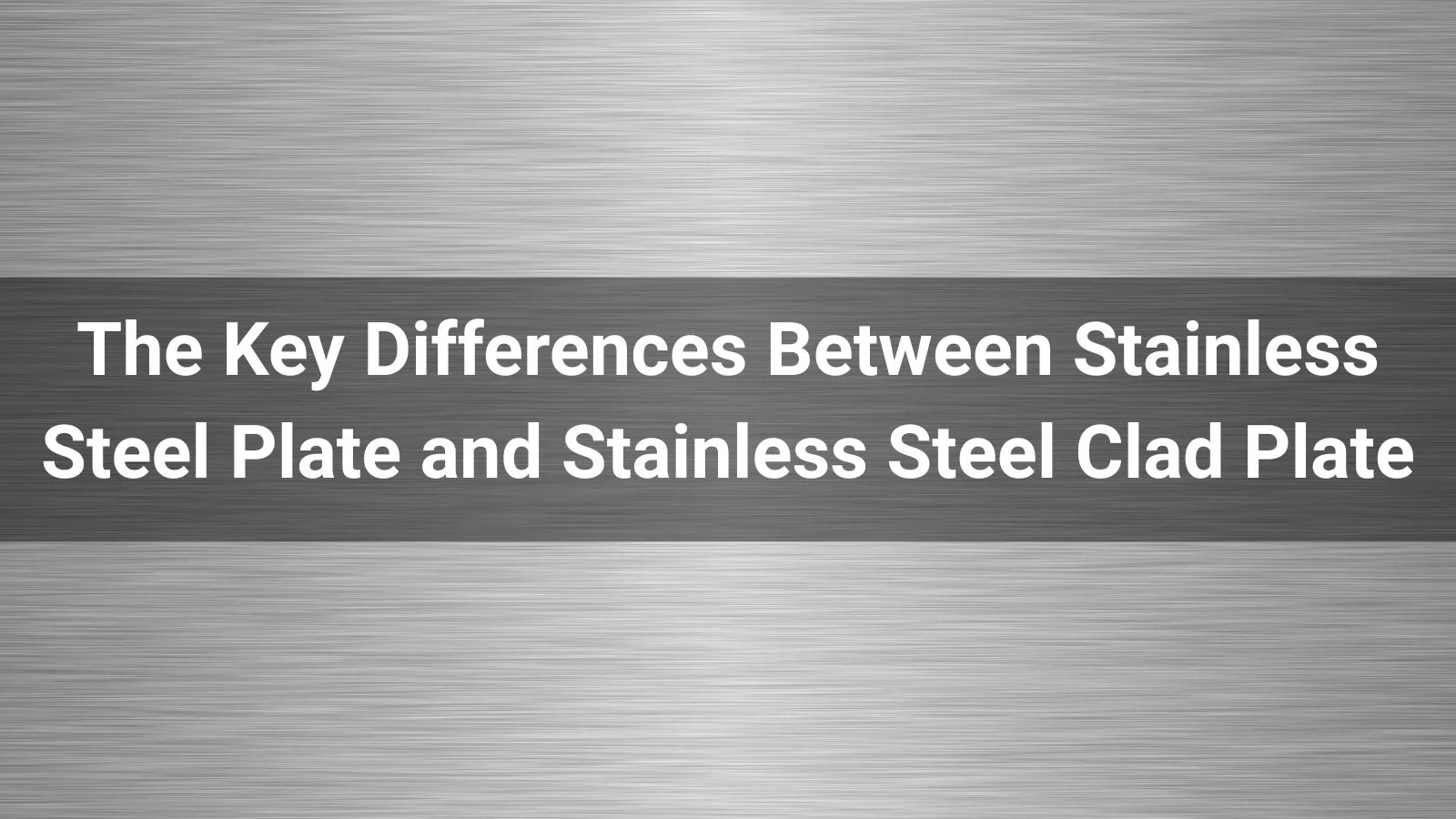

When specifying materials for pressure vessels, heat exchangers, chemical tanks, shipbuilding, or architectural cladding, two terms frequently cause confusion: Stainless Steel Plate and Stainless Steel Clad Plate. Although both look metallic and corrosion-resistant on the surface, they are fundamentally different in construction, cost, performance, and application.

Stainless Steel Plate (Solid Stainless Steel Plate)
● Made entirely of a single stainless steel alloy (e.g., 304/304L, 316/316L, duplex 2205, 904L, etc.) from top to bottom.
● The entire thickness (typically 3 mm to 150 mm or more) has the same chemical composition and properties.
Stainless Steel Clad Plate
● A composite material consisting of a thin layer of stainless steel (the “cladding” or “clad layer”) metallurgically bonded to a much thicker carbon steel or low-alloy steel backing plate.
● Typical structure: Stainless layer (1.5–12 mm) + Carbon/Alloy steel base (10–200+ mm).
● Common standards: ASTM A263 (chromium stainless), A264 (chromium-nickel clad), EN 13445-2, GB/T 8165.
| Feature | Solid Stainless Steel Plate | Stainless Steel Clad Plate |
|---|---|---|
| Cross-section | Uniform color & grain throughout | Two distinct layers (stainless + carbon steel) |
| Total thickness | 100 % stainless | Usually only 8–20 % stainless |
| Bonding method | N/A (homogeneous) | Explosion bonding, roll bonding, weld overlay |
| Typical appearance after cutting | Same material on edge and surface | Clear visible line between layers |
| Material (10 mm total thickness) | Approximate Price (USD/ton) | Relative Cost |
|---|---|---|
| Solid 304/304L plate | 2,800 – 3,500 | 100 % |
| 2 mm 304 + 8 mm CS clad plate | 1,400 – 1,800 | 45–60 % |
| Solid 316L plate | 4,500 – 5,500 | 100 % |
| 3 mm 316L + 7 mm CS clad plate | 2,000 – 2,600 | 40–55 % |
| Solid Duplex 2205 | 5,500 – 7,000 | 100 % |
| 3 mm 2205 clad | 2,800 – 3,600 | 45–60 % |
→ In most cases, clad plate saves 40–60 % of material cost while providing virtually identical corrosion resistance on the exposed surface.
| Property | Solid Stainless Plate | Clad Plate |
|---|---|---|
| Corrosion resistance | Excellent throughout entire thickness | Excellent only on clad side (backing corrodes if exposed) |
| Mechanical strength | Depends on the stainless grade | Very high (backing steel carries most load) |
| Weldability | Straightforward (same material) | Requires special procedures (butter layer, etc.) |
| Thermal conductivity | Lower (stainless) | Higher overall (carbon steel dominates) |
| Weight | Heavier for same strength | Significantly lighter for equivalent strength |
| Repairability | Easy | More complex (must protect backing) |
| Maximum thickness available | Limited (~200 mm economically) | Almost unlimited (300+ mm common) |
Solid Stainless Steel Plate
● Food & dairy processing equipment
● Pharmaceutical tanks (full sanitary requirement)
● Architectural panels where both sides are visible
● High-temperature environments needing through-thickness corrosion resistance (e.g., furnace parts)
Stainless Steel Clad Plate
● Pressure vessels (ASME VIII Div.1 & Div.2 with UCS-23)
● Heat exchangers (TEMA shells with corrosive media on tube side only)
● Desalination plants
● Petrochemical columns and reactors
● Ship ballast tanks & chemical tankers
● Storage tanks for acids, urea, etc.
| Situation | Choose Solid SS Plate | Choose Clad Plate |
|---|---|---|
| Both sides exposed to corrosive media | Yes | No |
| Very thick sections (>50 mm) needed | Difficult & costly | Yes |
| Weight is critical (offshore platforms) | No | Yes |
| Budget is tight but corrosion protection required | No | Yes |
| High impact or through-thickness toughness required | Yes | Only if backing is high-quality (e.g., SA-516 70N) |
Solid stainless steel plate and stainless steel clad plate are not interchangeable — they solve different engineering and economic problems. While solid plate guarantees uniform corrosion resistance and simplicity throughout its entire thickness, clad plate provides nearly identical surface protection at a fraction of the cost and weight when the corrosive environment is limited to one (or sometimes two) sides.
In today’s large-scale projects — whether pressure vessels, heat exchangers, urea reactors, or offshore structures — stainless steel clad plate has become the go-to solution for most engineering teams and EPC contractors. Choosing the right material from the start prevents expensive over-specification and delivers the perfect balance of performance, safety, and economy.
Looking for a reliable supplier that delivers high-quality explosion-bonded or hot-rolled stainless clad plates with full traceability, third-party certification, and on-time global delivery? I highly recommend Fugo Tech. With decades of expertise and state-of-the-art bonding technology, Fugo Tech consistently helps projects worldwide save 40–60 % on material costs without compromising integrity or code compliance.
Need a quick feasibility study or quotation for your next vessel? Reach out directly to the Fugo Tech team — the potential savings on a single large reactor can easily exceed hundreds of thousands of dollars.
Choose smart, choose clad, choose Fugo Tech.



Fugo Tech is focused on the manufacturing of clad metal plate and distributes the Stainless Steel, Titanium, Nickel Alloy, Zirconium and other non-ferrous metal pipes, fittings, flanges, and fasteners.